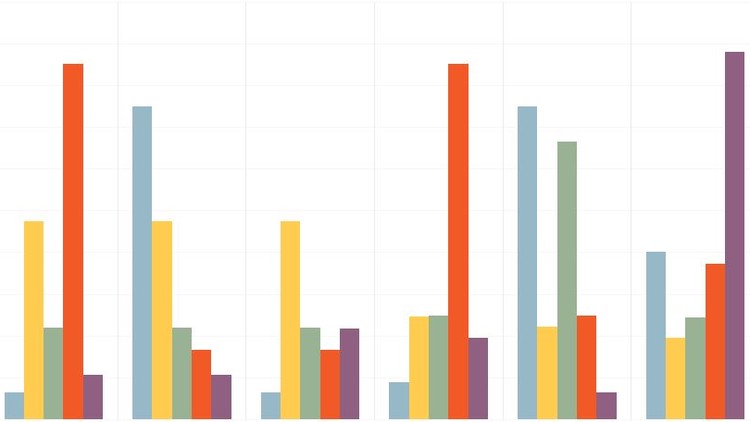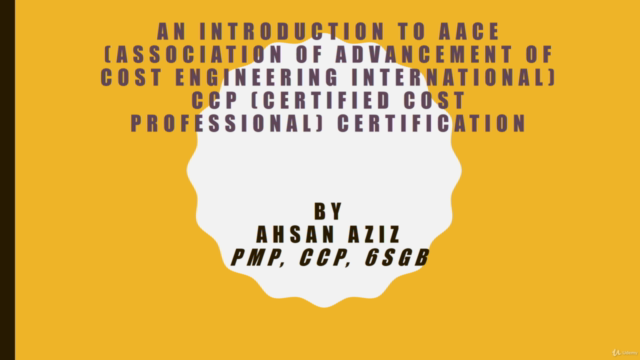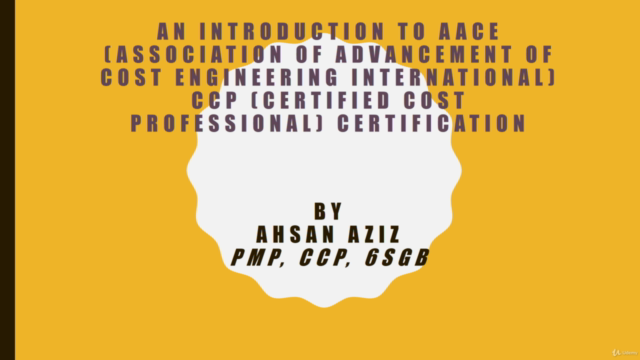A Guide to AACE Certified Cost Professional Certification

Why take this course?
🎓 A Guide to AACE Certified Cost Professional Certification
🚀 Course Introduction: Are you aspiring to become an expert in Cost Engineering and eager to enhance your skills in Project & Asset Management? The AACE Certified Cost Professional (AACE CCP) certification is the key to unlocking a plethora of opportunities in the cost estimation and project management domains. This comprehensive course meticulously covers all the essential principles and practical applications of cost engineering, preparing you to excel as a cost professional.
🔥 What You Will Learn:
Introduction to CCP Certification:
- Understanding the significance of the AACE CCP certification in the industry.
- Overview of the professional growth opportunities post-certification.
Section 1 – Cost: 💲 Understanding Cost Components:
- Chapter 1: Cost Elements – Identifying and categorizing cost elements within a project.
- Chapter 2: Pricing and Costing – Learning the methods to accurately price and estimate costs.
- Chapter 3: Materials – Exploring different types of materials and their associated costs.
- Chapter 4: Labor – Analyzing labor cost drivers and effective labor management techniques.
- Chapter 5: Engineering Role and Project Success – The pivotal role of engineering in project success.
- Chapter 6: Machinery, Equipment, and Tools – Understanding the economics behind machinery, equipment, and tool acquisitions.
- Chapter 7: Economic Cost – Learning to evaluate economic factors that influence costs.
- Chapter 8: Activity-Based Cost Management – Mastering the principles of activity-based cost management for improved project outcomes.
Section 2 – Cost Estimating: 📈 Mastering Cost Estimation:
- Chapter 9: Cost Estimating – Techniques and methodologies for accurate cost estimation.
- Chapter 10: Process Product Manufacturing – Understanding the cost implications in process product manufacturing.
- Chapter 11: Discrete Part Manufacturing – Focusing on discrete parts manufacturing and its economic aspects.
Section 3 – Planning and Scheduling: ⏱ Strategic Project Planning and Scheduling:
- Chapter 12: Project Planning – The essentials of developing a comprehensive project plan.
- Chapter 13: Scheduling – Techniques for effective scheduling to meet project timelines.
Section 4 – Progress and Cost Control: 🎯 Monitoring Project Performance:
- Chapter 14 – Earned Value Overview – Introduction to earned value management in projects.
- Chapter 15 – Performance and Productivity Management – Tools and techniques for measuring performance and productivity.
Section 5 – Project Management: 🌐 Comprehensive Project Management Skills:
- Chapter 16 – Project Management Fundamentals – The fundamentals of project management.
- Chapter 17 – Project Organization Structure – Designing effective project organization structures.
- Chapter 18 – Project Communications – Enhancing communication strategies within projects.
- Chapter 19 – Project Labor Cost Control – Managing labor costs to ensure project profitability.
- Chapter 20 – Leadership and Management of Project People – Leadership skills crucial for managing project teams.
- Chapter 21 – Quality Management – Implementing quality management practices in projects.
- Chapter 22 – Value Engineering – Techniques to improve project value through engineering principles.
- Chapter 23 – Contracting for Capital Projects – Understanding the complexities of contracting for capital projects.
- Chapter 24 – Strategic Asset Management – Strategies for managing and optimizing asset performance.
- Chapter 25 – Change Management Practical Guide – Managing change effectively to avoid project disruptions.
- Chapter 26 – Overview of Construction Claims and Disputes – A guide to understanding and handling construction claims and disputes.
Section 6 – Economic Analysis, Statistics, Probability & Risk: 📊 Quantitative and Qualitative Analysis:
- Chapter 27 – Financial and Cash Flow Analysis – Learning the art of financial and cash flow analysis for better project decision-making.
- Chapter 28 – Practical Corporate Investment Decision-Making Guide – Making informed investment decisions based on statistical data and corporate goals.
- Chapter 29 – Statistics and Probability – Applying statistical and probability models to project analysis.
- Chapter 30 – Risk Management Techniques – Identifying, assessing, and mitigating risks associated with projects.
By the end of this course, you will have a comprehensive understanding of cost engineering principles and how to apply them effectively within various project management contexts. You will be well-prepared to take on challenging roles in the industry and achieve the AACE CCP certification, marking your expertise in the field.
Enroll now and step into a future where your project management skills are not just good, but exceptional! 🚀
Course Gallery




Loading charts...